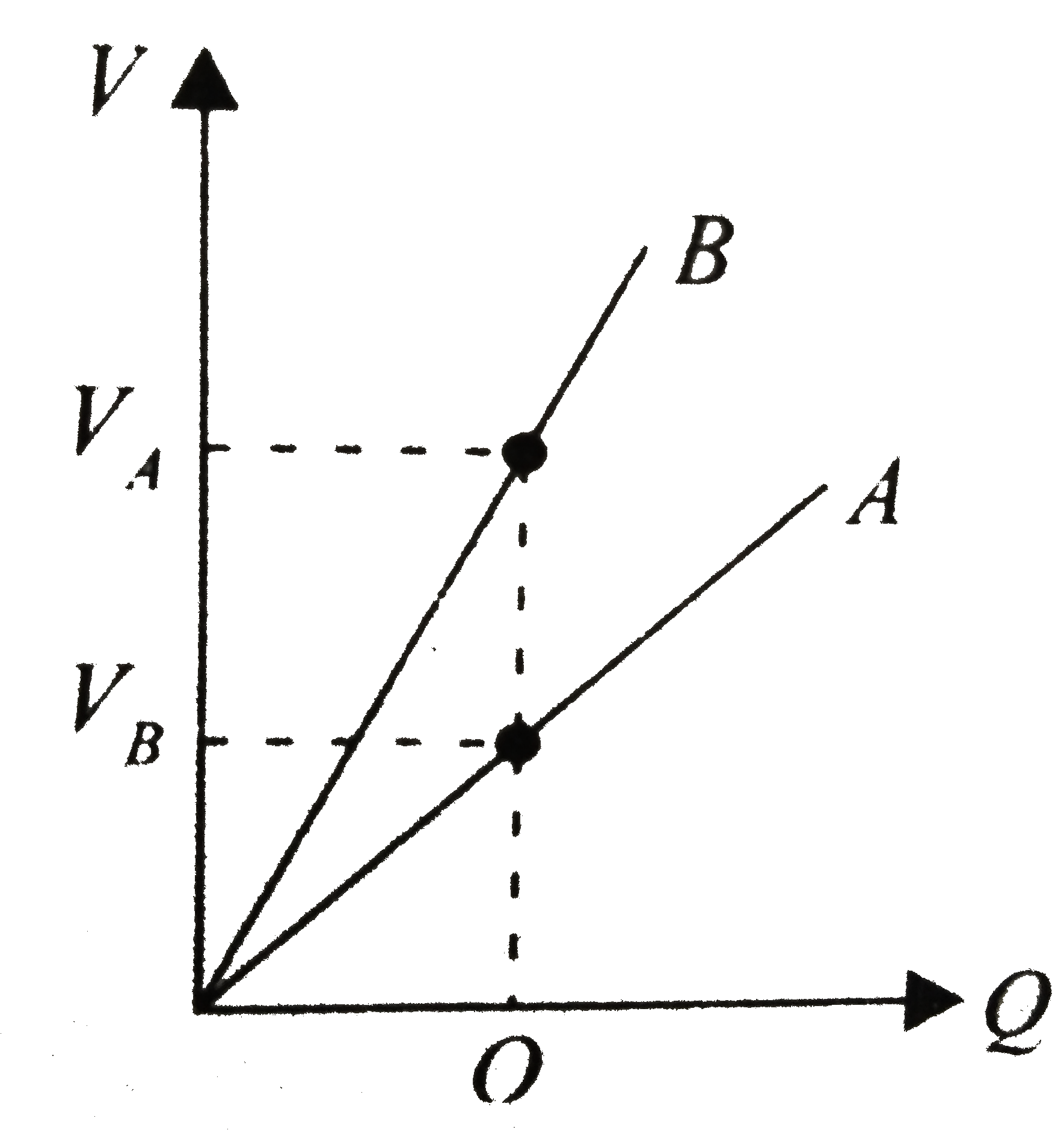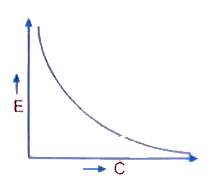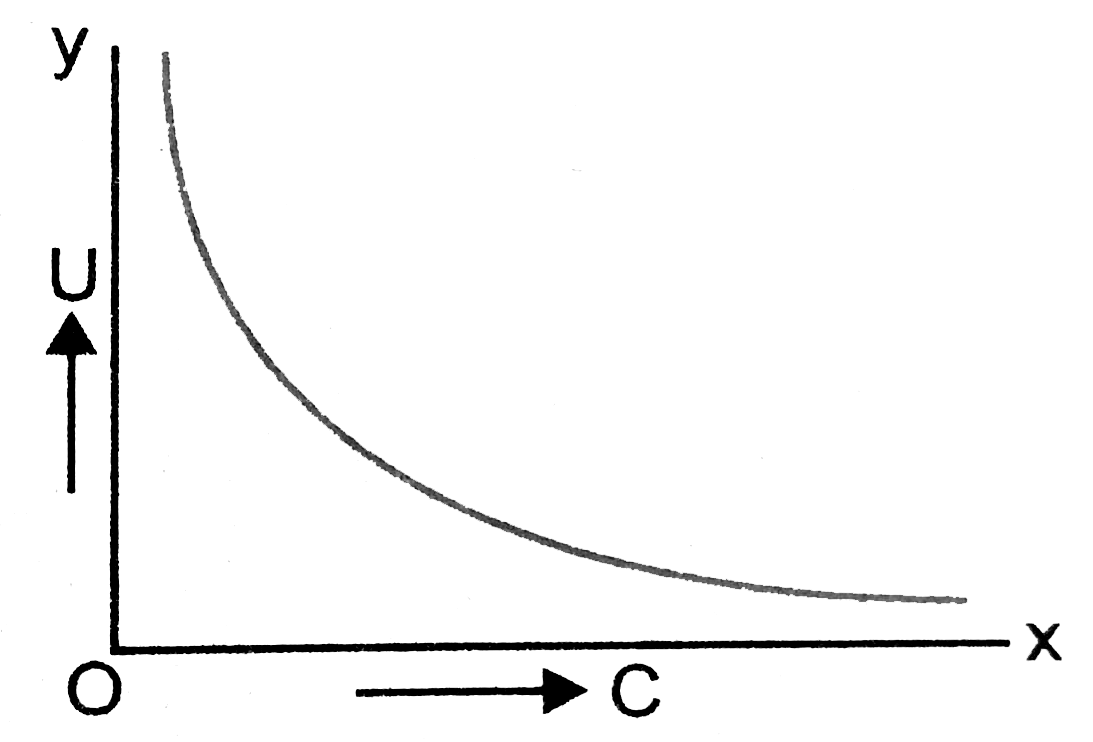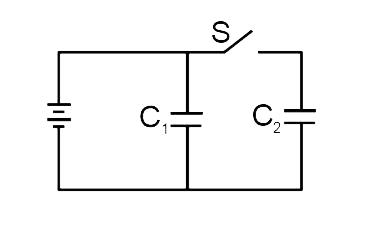Shows the variation of voltage V across the plates of two capacitors AandB versus incease in charge Q stored in them. Which of the capacitors has higher capacitance? Give reason for your answer.
 .
.
CA=CB
CB>CA
CA>CB
Cannot be determined
The correct Answer is:C
From the given graphs, find the voltages VA and VB on capacitors A and B corresponding to charge Q on each of the capacitors.
Clearly, VA=QCA and VB=QCB
or VBVA=Q/CBQ/CA=CACB
Since, VB>VA,CA>CB, i.e.,the∩aci→rA has the higher capacitance.
Topper's Solved these Questions
- CAPACITOR AND CAPACITANCEBook:CENGAGE PHYSICSChapter:CAPACITOR AND CAPACITANCEExercise:Exercise 4.2
Explore 32 Videos
- CAPACITOR AND CAPACITANCEBook:CENGAGE PHYSICSChapter:CAPACITOR AND CAPACITANCEExercise:Subjective
Explore 24 Videos
- CAPACITOR AND CAPACITANCEBook:CENGAGE PHYSICSChapter:CAPACITOR AND CAPACITANCEExercise:Solved Examples
Explore 10 Videos
- ATOMSBook:CENGAGE PHYSICSChapter:ATOMSExercise:QUESTION BANK
Explore 40 Videos
- CENGAGE PHYSICS DPPBook:CENGAGE PHYSICSChapter:CENGAGE PHYSICS DPPExercise:subjective type
Explore 51 Videos
Similar Questions
How will the voltage (V) between the two plates of a parallel plate capacitor depend on the distance (d) between the plates, if the charge on the capacitor remains the same?
View SolutionThe graph shown here figure, shows the variation of the total energy (E) stored in a capacitor against the value of the capacitance (C) itself. Which of the two - the charge on the capacitor or the potential used to 4 charge it is kept constant for this graph ?

View Solution
Knowledge Check
The potentials of the two plates of capacitor are +10V and −10V. The charge on one of the plate is 40C. The capacitance of the capacitor is
A2FB4FC0.5FD0.25FTwo identical capacitors are connected in series with a source of constant voltage V. If Q is the charge on one of the capacitors, the capacitance of each capacitor is :
AQ/2VBQ/VC2Q/VDNone of theseConsider a parallel plate capacitor originally with a charge q0 capacitance C0 and potential difference ΔV0 There is an electrostatic force of magnitude F0 between the plates and the capacitor has a stored energy U0. The terminals of the capacitor are connected to another capacitor of same capacitance and charge.
A dielectric slab with ke>1 is inserted between the plates of the first capacitor . Which quantity decreases?AqBCCΔVDF
Obtain the expression for the energy stored in a parallel plate capacitor of capacitance C charged to a potential V.
View SolutionA capacitor of capacitance C1 is charged to a potential V1 while another capacitor of capacitance C2 is charged to a potential difference V2 . The capacitors are now disconnected from their respective charging batteries and connected in parallel to each other .
(a) Find the total energy stored in the two capacitors before they are connected.
(b) Find the total energy stored in the parallel combination of the two capacitors.
(c ) Explain the reason for the difference of energy in parallel combination in comparison to the total energy before they are connected.
View SolutionThe graph in Fig, shows variation of total energy U stored in the capacitor against the value of the capacitance C itself. Which of the two - the charge on capacitor or potential used to charge is kept constant for this graph ?

View SolutionIn the circuit shown in figure find

a. the equivalent capacitance
b. the charge stored in each capacitor and
c. the potential difference across each capacitor.
View SolutionTwo capacitors of equal capacitance (C1=C2) are shown in the figure. Initially, while the switch S is open, one of the capacitors is uncharged and the other carries charge Q0. The energy stored in the charged capacitor is U0. Sometimes after the switch is colsed, the capacitors C1andC2 carry charges Q1andQ2, respectively, the voltages across the capacitors are V1andV2, and the energies stored in the capacitors are U1andU2. Which of the following statements is INCORRECT ?

View Solution

